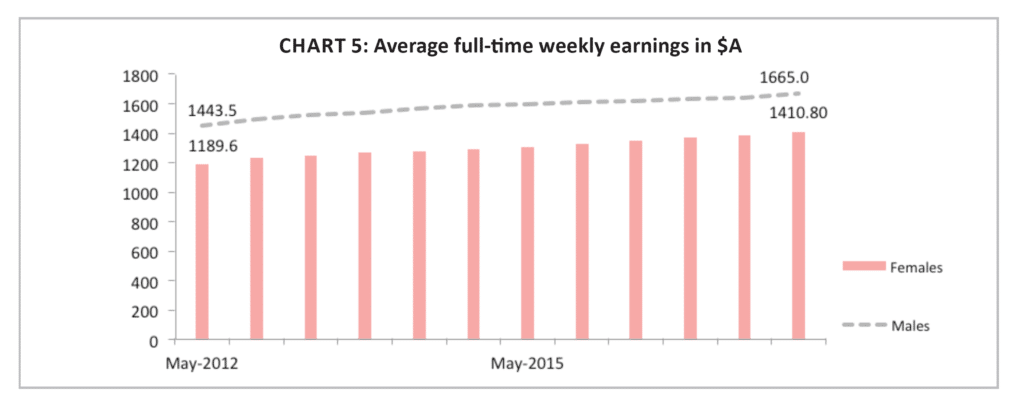I’ve got a problem with the gender pay gap. The most broadly used statistics used to calculate the difference between what women and men earn, are not quite right.
As it stands, the data is skewed towards a male dominated workforce, isn’t measuring like-for-like and when it comes to superannuation, it’s too infrequent.
Until this changes, debate on gender equality in relation to a woman’s financial wellbeing may continue to go around in circles.
The biggest problem is the underlying national data we tend to rely upon to call out a gender pay gap, be that in sports last week or this week, because of the impact of the new childcare subsidy, is fundamentally skewed by there being nearly three times as many men working full-time as there are women.
It’s not a new point, yet despite it, the Federal Government and policy makers appear to be doing little about it.
And so we have a situation where as a nation we are increasingly calling out a gender pay gap among high profile personalities, and senior managers yet because of the ability to debate the data itself, the wage disparity is not being adequately addressed.
If you can’t measure it, you can’t fix it – which is a very loose paraphrase of the words of Michael Bloomberg.
Since releasing the Financy Women’s Index, a scorecard on the economic wellbeing of women, I’ve received a number of emails debating the gender pay gap. This, I always expected, especially the heated points.
But what I didn’t expect was one email from a man, who cooly said that his workplace, within the electricity sector, there is no gender pay gap for like-for-like roles.
Certainly I could have argued the point and added a “did you know that: that the electricity sector actually has a 10.5 per cent gender pay gap?
“That’s better than the national average of 15.3 per cent. It’s also significantly better than the 50 per cent gender pay gap commonly seen in Australian sports, (note: to world surfing last week) according to the Workplace Gender Equality Agency (WGEA).”
But he was making an important point that shouldn’t be dismissed.
Like-for-like roles are not being captured in the national gender pay gap data crunch.
If they were, we might have a very different story on the gender pay gap.
Earlier this year, PwC Australia announced its gender pay gap in like-for-like partnership level roles was zero percent.
But overall, the company said the gender pay gap among its 640-odd partners was 16 per cent, reflecting the fact that there are more men holding more senior partnership roles than women.
As it stands, when I calculate the national gender pay gap I look at official data from the Australian Bureau of Statistics, the national difference between women’s and men’s average weekly full-time earnings. This is the typical way to go about it.
This figure comes from an ABS sample, which last year was about 5700 employers, designed to represent 8.5 million full-time workers, of which only 3.14 million are women. By contrast WGEA, which does a good job reporting on the gender pay disparity, The WGEA also used data that it captures from over 4 million employees, representing around 40 per cent of the total Australian Labour market. Its sample is also male dominated.
The biggest problem here is that we don’t have enough women working full-time – despite it being at a record high.
The other problem is that no weighting is being placed on the raw numbers of men versus women. And no value is placed on the amount of unpaid full-time primary care work performed by women, and indeed a small but growing number of men.
A greater gender lens is needed particularly at the Australian Bureau of Statistics, which arguably needs improved resourcing to allow it to not only fine tune the data relied on for calculating the gender pay gap, but to enable it to report more frequently.The ABS, like many organisations, says its under pressure to deliver more with limited resources. But there is hope that as part of a five-year transformation, that it might be about to enhance the way it reports on gender statistics.This is particularly needed for superannuation. Currently the superannuation savings gap between men and women, tends to be based on underlying ABS data that is reported every two years.This means that by the time the media can report that women have around 30 per cent less saved in their superannuation fund compared to men, this data is so dated that it risks not being relevant.If we are ever to make inroads into addressing and fixing the national gender pay and the superannuation savings gap, then governments have got to arm the country’s biggest statistical agencies with an improved ability to report on gender statistics. Yes this means, applying a gender lens and sticking to it.














